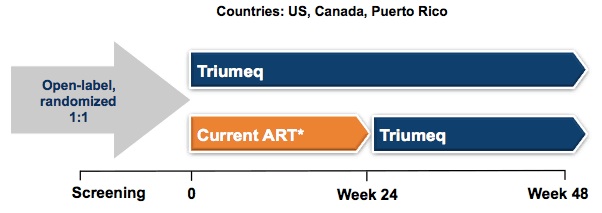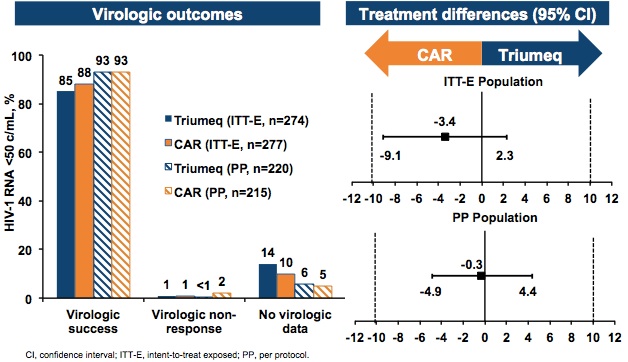An ongoing dialogue on HIV/AIDS, infectious diseases,
November 15th, 2015
Speechless
Friday, November 13, 2015, late afternoon. This time of year, in Boston, it feels like early evening, but the clock says it’s only a bit after 4pm. I log onto our electronic health record to check for lab results and patient messages, and get this:

There it is, the “Message of the Day”, complete with the this-is-important exclamation point, but the message box is empty, saying nothing. Must be some sort of programming glitch, a slip-up buried in the millions lines of code and ones and zeros that are supposed to represent our patients.
I’ve never seen this particular error before. What does it mean — what is the EHR trying to tell us, but can’t find the words? Should I report it? If so, the question is to whom — but does it even matter? The easier path is to just click the OK box and move on.
Shortly after dealing with this minor inconvenience, I hear about the events in Paris — over a hundred dead from carefully coordinated terrorist attacks, grim images coming forward of bloodied bodies and a city now frozen in fear.
Sadly, there is no OK box to click for this tragedy.
Words alone are insufficient to describe our support for the people of France.
[youtube http://www.youtube.com/watch?v=l6vGq_rHAmE&w=560&h=315]
November 8th, 2015
New HIV Treatment “ECF-TAF” is Really All About the “TAF” Part
 HIV providers and patients recently got this news from the FDA:
HIV providers and patients recently got this news from the FDA:
The U.S. Food and Drug Administration today approved Genvoya (a fixed-dose combination tablet containing elvitegravir, cobicistat, emtricitabine, and tenofovir alafenamide) as a complete regimen for the treatment of HIV-1 infection in adults and pediatric patients 12 years of age and older.
(Disclosure: I have been involved with the clinical trials; you can read my full disclosures here. That involvement notwithstanding, some sort of comment seems appropriate — this is an HIV/ID blog, after all.)
The availability of elvitegravir, cobicistat, emtricitabine, and tenofovir alafenamide — hereafter abbreviated “ECF-TAF” — brings us the fifth one-pill-a-day treatment for HIV. Of course we already have something very similar, which is ECF-TDF, and hence the only thing new here is the TAF component.
So what does ECF-TAF bring us that we didn’t already have with ECF-TDF?
Based on multiple clinical studies, here are what I think are the proven differences between the two:
- Less effect on bone density. As initial therapy, TAF induces less bone loss than TDF — the former is comparable to NRTI-sparing strategies. Furthermore, in multiple clinical studies, switching from TDF to TAF improves bone density.
- Decreased renal toxicity. In several trials involving over 3000 patients, no case of tenofovir-related renal toxicity has occurred in an ECF-TAF-treated patient. TAF’s effect on urinary proteins (a surrogate marker for renal effects) is also significantly less than TDF. One unknown is whether it can be safely given to a patient with a history of tenofovir-related renal toxicity; that question is under study. The regimen is approved for use in patients with estimated GFR down to 30 ml/min.
- A lower milligram dose. As part of ECF-TAF, the dose of TAF is only 10 mg, vs 300 mg for TDF. (When not given with cobicistat or ritonavir, the dose will be 25 mg.) A lower milligram dose means smaller pills and easier coformulations.
- A novel way to simplify complex regimens. As noted here, ECF-TAF can be combined with 800 mg of darunavir to make a two-pill treatment for some patients with multi-drug resistant virus. You couldn’t do this with ECF-TDF, at least not with confidence — it hadn’t been studied, and the three-way drug-drug interaction between cobicistat, darunavir, and elvitegravir gave me pause.
- Less lipid-lowering effect. Tenofovir lowers lipid levels (mechanism still unclear), and since TAF delivers 90% lower blood levels of tenofovir than TDF, there is less of this effect. This lower tenofovir exposure is mostly a good thing (see renal and bone above), but not here. I suspect this won’t be clinically relevant, but of course we don’t have enough follow-up data since the incidence of cardiovascular events in short-term clinical trials is so low.
And here’s what’s not different:
- Antiviral activity. Though in phase I studies TAF induced greater declines in HIV RNA than TDF, virologic outcomes (meaning failures and incident resistance) in studies comparing ECF-TAF with ECF-TDF have been similar.
- Drug-drug interactions. The “C” in both ECF-TAF and ECF-TDF stands for cobicistat, the ritonavir-like PK “booster” that is necessary for elivitegravir’s once-daily dosing. A cytochrome p450 inhibitor, cobicistat has numerous drug-drug interactions — watch those medication lists carefully! Note that a combination of TAF/FTC and 9883 — an unboosted integrase inhibitor, no cobicistat required — is in development.
- Subjective side effects. There’s no significant difference in the incidence of patient-reported side effects. In other words, if your patient didn’t tolerate ECF-TDF, there is little point in trying ECF-TAF. Good news is that both are very well tolerated, with extremely low discontinuation rates for adverse events.
- The price. Encouragingly, ECF-TAF is priced the same as ECF-TDF, a decision lauded by this group. However, integrase-inhibitor based regimens remain relatively expensive (average wholesale price around $30,000/year) compared to NNRTI-based therapies, though cheaper than those that include a boosted PI.
Overall, ECF-TAF is welcome new option for treatment, and to emphasize again it’s the TAF part that makes the (only) difference. Future TAF formulations will include TAF-FTC-rilpivirine and TAF-FTC (which will need at least one other active drug) — these are expected some time next year. TAF-FTC-9883 is further away.
Meanwhile, we can continue to ponder the mysteries of choosing a brand name for a drug — “Genvoya” sounds to me like a high-end coffee maker.
November 1st, 2015
Should Doctors Still Be Allowed to Wear White Coats? You Decide
 If you’re not immersed in the ID or the Infection Control world, you might not be aware that there’s currently quite the controversy about whether doctors should wear white coats.
If you’re not immersed in the ID or the Infection Control world, you might not be aware that there’s currently quite the controversy about whether doctors should wear white coats.
I almost wrote “raging controversy” — but the adjective “raging” doesn’t really fit the sort of people who specialize in Infection Control, who are some of the most measured, data-driven, and methodical individuals in all of medicine. You know the stereotype of the brash, volatile, and cowboy surgeon, the person that everyone tiptoes around?
These Infection Control folks are the polar opposite.
Still, a white coat controversy does exist, and it goes like this:
- You can culture all kinds of scary bacteria from the sleeves of white coats.
- Doctors don’t launder their white coats very often.
- These bacteria could be transmitted to patients.
- Therefore, doctors shouldn’t wear white coats.
Not surprisingly, some have advocated a “bare-below-the-elbows” approach to doctors’ attire, and famously the British National Health Service has made it policy, banishing ties as well (and predictably not pleasing everyone). There was a tremendously entertaining debate on the topic this year year at IDWeek — such a pitched battle it almost met the “raging” criteria, but not quite (you could tell the combatants really liked each other). Right here in Boston, one of our current ID fellows feels quite passionately about the issue, and writes frequently on the topic.
The missing piece in the controversy, of course, is a definitive study showing that patient infection rates are actually reduced when a bare-below-the-elbows (often abbreviated “BBE”) strategy is adopted. Short of that, we’re all essentially hostage to whomever sets these policies wherever we work. And our hospital’s policies basically follow those of Society for Healthcare Epidemiology of America (SHEA), which “balance professional appearance, comfort, and practicality with the potential role of apparel in the cross-transmission of pathogens.”
In other words, wear white coats if you want, but keep them clean.
This data void, however, gives me permission to ruminate over some of the important and not-so-important questions that inevitably come up when contemplating white coats, and our ambivalent feelings about them.
Specifically:
- Why do some doctors wear them now, and some don’t? My wife the pediatrician said if she or one of her practice partners showed up in a white coat, the office staff would view it as bizarre as if they showed up dressed as a Roman centurion. She didn’t actually say that, but you get the idea — pediatricians don’t avoid white coats because of infection risk, but because they are considered potentially scary to kids. Meanwhile, the brilliant and fearsome Chief of Medicine during my residency considered us housestaff essentially naked unless we were wearing white coats, and the Chief Medical Residents kept a few extra in their offices on days he took Residents’ Report in case we showed up white coat-less — kind of like the maitre d’ at the formal restaurant keeping a few extra blazers in the coat closet in case someone arrives without a jacket.
- What do the patients want? Demonstrating that she was a far more compensated medical student than I, one of my classmates during medical school actually published a study evaluating patients’ preferences on doctor attire. Yes, patients liked white coats back then, jeans not so much. It’s one of many such studies appearing in the medical literature over the years; a systematic review of them is summarized in this paper published in the British Medical Journal. Consensus? Patients still seem to like them, but of course for every opinion about the reassuring message of professionalism conveyed by the white coat, there’s an opposite view that they reinforce outdated hierarchical structures in healthcare.
- What should doctors wear if they don’t wear a white coat? The obvious first thought is scrubs, but there are a few problems here. First, scrubs are basically utilitarian pajamas, and can get pretty nasty unless washed daily. Second, they don’t offer much in the way of insulation, a huge issue in the winter and in ubiquitous over-air conditioned interiors. Third, scrubs can be very unkind to certain body types, male and female alike. (You know what I mean.) Fourth, they have basically no storage space — cell phone, wallet, that’s it — forget the reflex hammer, ophthalmoscope (though it’s useless to me), or pocket manual, and wearing scrubs makes your stethoscope a permanent half-necklace. Finally, the public has lots of negative feelings about scrubs — especially when they see doctors wearing them outside the hospital, which means to adopt scrubs as standard gear means changing when you get to work, ugh. And if not scrubs? Men probably clean their suits less often than they wash their white coats, and my daughter told me recently that button-up short sleeved shirts on men are a huge fashion faux-pas, to be avoided as much as backpacks with wheels and belt clips for cell phones. Who knew?
- If white coats go, what happens to the “White Coat Ceremony” during medical school? Apparently, 97% of medical schools now have a White Coat Ceremony, the purpose of which is “to welcome new students into the medical profession and to set clear expectations regarding their primary role as physicians by professing an oath.” Does that oath now include a specified frequency of laundering, including minimum water temperature and the need to use bleach? By the way, you youngsters might be surprised to hear that these solemn and moving rituals are relatively new. Back when I was in medical school, they just left you in a room alone with a cadaver, turned out the lights, and timed how long you could stay there before you screamed for help.
- How would New Yorker cartoons designate doctors if white coats were abandoned? This is a very important question. Take a look — the overwhelming majority have the MD in a white coat, and those few that don’t typically involve surgeons in the OR. Here’s one of the rare exceptions to the above rule and 1) the guy is wearing long sleeves (not BBE!), and 2) it’s not that funny. I’d give it a 7 out of 10 on the funniness scale — now this one is funny. Note that this brilliant cartoonist often adds the head mirror to the white coat, just so you couldn’t possibly think that the white-coated person in his cartoon might be an insurance salesperson or an airline pilot.
Ok, so controversy not resolved. Please vote!
October 29th, 2015
The Most Important HIV Study at IDWeek 2015
After reporting my choice for the most important HIV study at ICAAC, I received this email from a colleague:
If that’s the most important study, I really didn’t miss much …
Now she has notoriously high standards — hard to impress her — but her opinion notwithstanding, I still think the STRIIVING study has some important messages we can apply to clinical practice today. So I stick by my choice.
Now let me see if I can meet her approval with an IDWeek 2015 (which took place earlier this month) selection. It’s another HIV switch study, although this time with a twist. Instead of the usual switch-study population (first regimens, or only those with no history of virologic failure or resistance), it looked at a very different group — patients who were virologically suppressed but highly treatment-experienced, all with 2-class (or more) resistance, and taking multiple pills a day with a darunavir-based regimen.
Subjects were then randomized to continue their current therapy or switch to the two-pill treatment of elvitegravir-cobicistat-FTC-TAF (ECF-TAF) plus darunavir 800 mg, both once daily. (Thanks to Greg Huhn, the presenting author, for sharing the slides.)
At baseline, the regimens included a median of 5 pills, and around 60% were taking at least 6 or more pills a day. Most had a history of M184V, and a significant minority had K65R and/or PI resistance.
At week 24, 97% vs 91% of the ECF-TAF + DRV vs continued baseline regimen groups had HIV RNA < 50 cop/mL; at week 48, it was 94% and 76%, a significant advantage of ECF-TAF + DRV.
No new resistance was observed in those with virologic failure on the 2-pill arm; one subject developed resistance in the baseline regimen group, but not integrase resistance. A PK substudy demonstrated acceptable levels of both EVG and DRV, greatly exceeding IC95 and IC50 respectively.
Some comments on this study:
- Approval of ECF-TAF is expected soon, and I suspect this particular indication for switch will not be part of the product label. The data are very recent, and the study is relatively small.
- Even if it’s not in the label, however, these study results certainly suggest that some patients on complex regimens (many of whom are yearning to take something simpler) will be able to shift to just two pills a day — a welcome change.
- The PK substudy was extremely reassuring, greatly diminishing concerns about the head-spinning three-way interaction between elvitegravir, cobicistat, and darunavir. That interaction, by the way, is the reason why we shouldn’t use darunavir with the currently available ECF-TDF.
- Take a close look at those eligibility criteria — in particular the resistance ones — because they’re important. It’s why I italicized the words “some patients” in my comment above.
- Why is this so important? Patients with more than 3 TAMs, the multi-NRTI resistance mutations Q151M or T69S, or darunavir mutations were excluded. We don’t know if switching patients with any of these criteria to ECF-TAF and darunavir will maintain virologic suppression.
- Virologic rebound for patients with multi-class resistance who are stably suppressed could be disastrous — it would be terrible to take a patient with 3-class resistance and virologic suppression to 4-class resistance (including integrase) and rebound, especially since the HIV drug pipeline has relatively few investigational agents.
The take home message from this study is that when ECF-TAF is approved, a subset of our patients who are taking complex regimens could safely switch to two pills a day — ECF-TAF + darunavir.
Finding the right patients will take meticulous scrutiny of their historical genotypes. But of course that’s why they pay us the big bucks!
Next year’s meeting? October 26-30, New Orleans.
[youtube http://www.youtube.com/watch?v=pXHdqTVC3cA&w=420&h=315]
October 24th, 2015
Pumpkin-Flavored ID Link-o-Rama
 As the leaves change colors and fall from the trees, the days grow shorter and colder, and pumpkin-colored and flavored merchandise shows up everywhere, I ask you this important question:
As the leaves change colors and fall from the trees, the days grow shorter and colder, and pumpkin-colored and flavored merchandise shows up everywhere, I ask you this important question:
What precisely are the infectious risks of bobbing for apples?
Off we go.
- Receiving antibiotics in childhood is associated with weight gain. The important finding in this study is that the effect occurs throughout childhood, not just infancy. Could it be that the antibiotic-obesity association will have a greater effect in reducing outpatient use of antibiotics than the risk of resistance? Lots of press coverage.
- At the other end of the age spectrum, here’s a thoughtful perspective on the widespread use of antibiotics at the end of life. I’ve covered this topic before — why are antibiotics so often given at the end of life when all other medical interventions are stopped? Paper cites one study suggesting “greater comfort, albeit shorter survival, among patients with advanced dementia and suspected pneumonia who were not treated with antimicrobials.” Sounds like withholding antibiotics could be the right move in palliative care.
- HCV therapy with paritaprevir/ombitasvir/ritonavir may precipitate hepatic decompensation and liver failure. Not surprisingly, “most” of the cases (which have precipitated an FDA-mandated label change) have occurred in patients with advanced cirrhosis.
- There are infectious risks associated with receiving injections of live cells, including Q fever from sheep cells and M abscessus from human fetal cells. Certainly infection is one good reason not to undergo these treatments; the second and even better one is that none of these therapies has any proven medical benefit. A bit more on this longstanding form of quadkery here.
- The ocular syphilis cluster on the West Coast is a reminder that in the post-PrEP, post treatment-as-prevention world, condomless sex is inevitably increasing among MSM, along with rates of sexually transmitted infections. Note that this report repeats the recommendation that all patients with ocular syphilis should 1) undergo a CSF exam (which may be negative in ocular syphilis) and 2) be treated for neurosyphilis regardless of CSF results. Which prompts me to ask — then why do the CSF exam if treatment isn’t changed based on the results?
- Transmitted NNRTI resistance does not appear to influence response to integrase-based ART. This nice analysis presented at IDWeek from a Stanford/Kaiser collaboration confirms previous reassuring findings from prospective clinical trials. And it means you probably don’t need to use a boosted PI in this situation.
- Promising results from a small (n=20) single-arm pilot study of two-drug, dolutegravir + lamivudine ART in treatment-naive patients. Think GARDEL strategy, only with DTG and not LPV/r. 20/20 are virologically suppressed at week 24, and all but one were < 50 by week 8. Note that the inclusion criteria limited enrollment to patients with HIV RNA < 100,000 and CD4 > 200. A larger (but still not comparative) clinical trial of this strategy is opening soon.
- In the vaccine world, is there anything more complicated than the recommendations for meningococcal immunization? Based on a meeting that took place this June, they’ve now changed again to include the serogroup B vaccine for late adolescents. When in doubt on vaccine-related issues, head over to the invaluable immunize.org site, in particular the “Ask the Experts” section.
- No clinically significant drug-drug interactions between ECF-TAF or RF-TAF and sofosbuvir/ledipasvir. Even with the ledipasvir slightly boosting tenofovir exposure, levels remain 5X lower than when TDF is used. ECF-TAF (“Stribild 2.0”) approval expected next month, RF-TAF (“Complera 2.0”) next year.
- Here’s a nifty case report: A 91-year-old man had 10 separate hospital visits for fevers, chills, and hypotension over a two year period, several times with positive blood cultures for Aeromonas hydrophila. The source? Contaminated well water. My favorite quote from the paper: “Culture results revealed significant overgrowth of A hydrophila from his master bathroom sink; he used this water supply to soak his dentures nightly.” Made me think of this household product — he’s old enough to have watched that ad.
- On the topic of great cases, here’s a very nice inaugural piece on the In Practice blog by Harrison Reed, who reminds us that these rare and astounding cases — zebras — are vastly outnumbered by the more common cause of hoofbeats, horses.
Warning, adult content time. In her HBO special, Amy Schumer not surprisingly has a plenty of ID-related jokes — including this surprising one:
I was dating an Infectious Diseases doctor, cause two birds …
How convenient! And by the way, Amy — if you need a new writer, you know where to find me! Right here — and now on Twitter at @PaulSaxMD.
[youtube http://www.youtube.com/watch?v=5HlImrCEkWo&w=560&h=315]
October 17th, 2015
Dear Flu Vaccine: Please Improve!
As the supply of you and your brethren have arrived in our clinics, on our hospital floors, and in pharmacies, I thought it would be a good time to reach out and tell you how to get better.
That’s right — here, free of charge, is a to-do list for how you can improve.
Understand, I’m one of your top “boosters” (sorry for the pun), and of course I got mine this year — as I do every year. You’re better than nothing, after all.
But as a patient of mine refused his flu shot this past week — “it gives me the flu” he (wrongly) said — I became motivated to reach out and let you know exactly what you should start working on:
- Become more effective. I’m sure you think that the less said about last year’s effectiveness the better, but really — 19% protection? That’s pretty lame, my friend! Your usual 60% protection seems kind of awesome by comparison, doesn’t it, and even that’s no great shakes. OK, ok, I realize it’s because the vaccine strains didn’t precisely match the circulating ones last year, but c’mon. You can do better than that. I know you can.
- How about some durability? Let me list the number of vaccines we recommend to our patients every year.
1) Flu.
That’s it — you’re the only one. And you don’t want to be in this exclusive club. It’s no wonder that many people act like it’s tax day when you tell them that the flu vaccine is due. Again? Didn’t we do just do this, like, yesterday? - Give us fewer options. Must you come in so many different forms? It’s too complicated, like trying to choose a breakfast cereal in a big supermarket. Don’t you know that too much choice is paralyzing? Trivalent. Quadravalent. High dose. Regular dose. Attenuated intranasal mist. Recombinant egg-free. Free range and gluten- free. (I made that up.) Please, enough already. Even the vaccine experts at ACIP can’t (or won’t) make a firm recommendation. This is what they say: “For persons for whom more than one type of vaccine is appropriate and available, ACIP does not express a preference for use of any particular product over another.” Thanks, really helpful. Now what?
- Be more reliably available. Supply is notoriously erratic. Sometimes the hospitals get flu vaccines first; sometimes the pharmacies; sometimes the community-based practices. Sometimes there are no vaccines for babies. There are shortages some years — then it’s like a new iPhone release, generating absurd lines — and too much supply the next, you can’t give the things away. This year it’s the nose spray vaccine — where is it? Next year it will be — who knows? Figure it out already!
- Develop an easy, universal tracking system. People can get flu shots in so many different locations we have no idea whether our patients have received them. Doctors’ offices. Pharmacies. On the job. Pop-up “flu clinics” at the neighborhood mall, church-temple-mosque, community center. Toll booths and fast food drive-thrus (throughs?) will be next. While we like the widespread availability, it makes quality assurance programs all but impossible. Here’s an idea — how about a web site, igotmyflushot.org, where people can enter their name and date of birth, and electronically release the information to their doctors? Yes, I know it’s a great idea. You’re welcome.
- Make it more understandable what you prevent. Email from non-MD friend:
Friend: “Is there flu about? Wife has fever, nausea. Son too.”
Me: “Yes there’s flu. But flu is mostly a respiratory illness — cough, sore throat, that kind of thing. Sounds like they have a stomach bug.”
Friend: “Oh yeah. Both had questionable chicken tacos at State Fair yesterday.”
Ok, maybe this misunderstanding isn’t really your fault. But somehow I believe that if you were more effective, the public would have a clearer understanding of what you prevent (on a good year) and what you don’t, and more confidence that they received something that works. Here’s what you prevent: Influenza. Here’s what you don’t prevent: Colds. Stomach bugs. Various other causes of fever. Is that so hard?
Remember, I offer the above suggestions even though I’m a strong advocate of getting the flu vaccine. It does work sometimes, influenza is a miserable illness, and frankly one could justify it solely on altruism — who wants to be the disease vector that triggered a hospitalization in a baby, a frail elderly person, or someone with a weakened immune system?
Still, there’s room for improvement. Ok, lots of room. And we can dream, can’t we? Just like the guy in the video below.
Signed,
An Infectious Diseases Doctor with a Slightly Sore Left Arm (but it’s not too bad)
[youtube http://www.youtube.com/watch?v=gasAm4DIVsg&w=560&h=315]
October 13th, 2015
Yes, There Are Important HIV Studies at ICAAC and IDWeek — Here’s One
 Both ICAAC and IDWeek (formerly IDSA) are now over, IDWeek ending this past Sunday.
Both ICAAC and IDWeek (formerly IDSA) are now over, IDWeek ending this past Sunday.
These are the two large Infectious Diseases scientific meetings that take place each year in the Fall. They’ve been battling it out for years for attendance, but it looks like finally IDWeek (formerly IDSA) has won the Fall slot — ICAAC is moving next year to the Spring, where I assume it will stay.
Regardless of which meeting one attends, or when they happen, a common complaint heard from HIV-specialist types goes like this:
Well, it’s not like CROI — hardly anything here new and important.
Well, of course it’s not like CROI — that’s a whole meeting devoted to HIV research, both clinical and basic. It’s unreasonable to expect there will be anywhere near the number of oral sessions, posters, and plenaries on HIV at non-CROI meetings because, obviously, ICAAC and IDWeek have to represent the full breadth of material in the field.
But there usually is some good stuff, studies that could significantly impact clinical practice. Here’s the most important HIV study from ICAAC, and soon the notable ones from IDWeek.
In the STRIIVING study, 551 virologically suppressed patients were randomized to stay on their regimen or to switch to ABC/3TC/DTG; it was open label (images thanks to the essential natap.org):
Eligibility criteria included being on first or second regimens with no history of treatment failure, and HLA-B*5701 negative.
At the end of 24 weeks, treatment success (HIV RNA < 50 copies by “snapshot”, meaning also still in study) was observed in 85% and 88% of subjects in the switch vs continue current ART arms respectively:
There were no virologic failures or emergent resistance in either arm. 4% (10 total — not 10% as I erroneously wrote) of the ABC/3TC/DTG group stopped the study due to adverse events (none considered serious) vs. zero in the continued ART arm. Treatment satisfaction at week 24 was significantly higher for those on ABC/3TC/DTG.
A few comments on these results, which were both reassuring and disappointing at the same time:
- There are now four available single-tablet treatments for HIV, and all have had prospective, randomized switch studies similar in many ways to this one — previously TDF/FTC/EFV, TDF/FTC/RPV, TDF/FTC/EVG/COBI for PI and NNRTI switches.
- Up until now, all of these studies numerically (if not significantly) favored the switch to the single tablet — not really surprising, as patients entering these studies typically want to simplify their regimens.
- Why didn’t this happen in STRIIVING? I can think of three kind of overlapping reasons: 1) A high proportion of subjects were already receiving integrase-based (and hence well-tolerated) treatments; 2) Also a high proportion were already on single-tablets; 3) All of these single-tablet treatments (before this one) would necessarily include TDF/FTC, and many of the multi-tablet regimens would as well. There’s probably a somewhat less-favorable tolerability profile of ABC compared with TDF, independent of hypersensitivity reactions (which didn’t happen in this study, obviously, since all were HLA-B*5701 negative).
An interesting irony is that the SINGLE study — which emphatically put DTG on the map — demonstrated superiority of ABC/3TC + DTG over TDF/FTC/EFV, results driven by better tolerability. Think about that one, and what it says about efavirenz.
Take-home message? Switching to ABC/3TC/DTG will mostly be successful (especially virologically), but a small fraction might have side effects that makes them prefer what they’ve already been on.
Anyway, that’s the most important HIV study at ICAAC. Coming soon, the most important one (or two or three, haven’t decided yet) at IDWeek.
Good time for a baseball moment. Congrats, Cub fans! (So far.)
[youtube http://www.youtube.com/watch?v=WOYME2Q4nAg&w=560&h=315]
October 7th, 2015
The Future of Diagnostic Microbiology, in 17 Minutes!
 Over at Open Forum Infectious Diseases, I had the pleasure to interview Dr. Angela Caliendo about the latest advances in diagnostic microbiology. She touches on molecular testing in general, rapid pathogen identification (especially with MALDI-TOF, everyone’s favorite acronym), “syndromic” diagnostic testing for respiratory infections and diarrhea, use of Xpert for TB even here in the United States, and, of course the cost of implementing all these new technologies.
Over at Open Forum Infectious Diseases, I had the pleasure to interview Dr. Angela Caliendo about the latest advances in diagnostic microbiology. She touches on molecular testing in general, rapid pathogen identification (especially with MALDI-TOF, everyone’s favorite acronym), “syndromic” diagnostic testing for respiratory infections and diarrhea, use of Xpert for TB even here in the United States, and, of course the cost of implementing all these new technologies.
It’s incredibly entertaining, especially for ID geeks like me, and that’s because of the person I’m interviewing. Here are few key facts about Dr. Caliendo:
- She goes by Angie.
- She’s Professor of Medicine at Brown, and Vice Chair of the Department of Medicine. Before that, she was the Medical Director of the microbiology lab at Emory for 14 years.
- She’s one of those rare individuals who understands both the clinical and the laboratory side of medicine, an MD/PhD who really does blend both of those degrees.
- She’s an incredible teacher. If you’re looking for a Grand Rounds speaker on an ID topic, look no further!
- She’s been a major driver in the effort to improve diagnostics in Infectious Diseases, and was the lead author in this widely cited position paper.
Angie and I were medical residents and ID fellows together (a few years ago, ahem), and I can only remember one weakness (if you can call it that) — she has a horrible sense of direction. Really hopeless. I once told her to drive “towards the river” two blocks away from the Charles, and she looked at me as if I’d asked her to navigate to Mars. She admitted that she only knew where the river was if she could literally see it.
Aside from that, however, working with Angie was all gold.
Interview here, transcript here.
October 1st, 2015
WHO Decision to Recommend Treatment for All with HIV an Easy One — Now Comes the Hard Part
In the newspaper today — and yes, we still do get it delivered (some habits die hard) — is this headline:
Millions More Need H.I.V. Treatment, W.H.O. Says
It’s true — these updated guidelines say that all should be treated soon after diagnosis, regardless of CD4 cell count or whether they have symptoms.
Now, a certain non-ID doctor read the headline this morning, and asked me what the big deal is. After all, she’s been hearing about our treating everyone with HIV here for years — since 2012, if you want to be precise about it.
Even before that, in trendy San Francisco, the Department of Public Health in 2010 recommended treatment for all people with HIV regardless of CD4 cell count. Today this decision is paying big dividends in that city, with a decline in new HIV diagnoses probably linked to this policy in action.
Indeed, given the results of the START, TEMPRANO, and HPTN 052 studies, the WHO’s decision to modify its recommendation is about as surprising as Jerry’s telling George, Kramer, and Elaine that he wants to have lunch at Monk’s.
(Not sure why I thought of that analogy. Must be hungry.)
The data are now so overwhelmingly in favor of universal treatment of HIV infection that I can only think of one subset of patients for whom therapy has not been proven to be beneficial. These are the rare “HIV controllers” with undetectable virus and normal CD4 cell counts even without treatment. My hunch is that it probably benefits them too, though this is still under study.
The challenge, of course, is putting the “treat-all” policy into action. In Sub-Saharan Africa, the UNAIDS estimate of the proportion of people living with HIV who have been diagnosed is only 51%. Obviously, the other 49% are not getting any sort of treatment unless there is a massive HIV testing campaign.
In addition, treatment of everyone will likely strain both human resources and medication supply, with an additional 9 million people eligible for treatment but no new funding source to pay for it. As such, there’s an important statement in the guidelines about whom to treat if resources are limited:
Regardless of the epidemic profile and disease burden, priority should be given to people with symptomatic HIV disease or with CD4 count at or below 350 cells/mm3 who are at high risk of mortality and most likely to benefit from ART in the short term.
In other words, if you can’t treat everyone, treat the sickest first — they have much more to gain survival-wise than healthier people with HIV, so you definitely get more for your human and pharmaceutical investment.
But are clinical programs set up to do this? I suspect that with this recent WHO Guidelines change, most will operate under a “first-come, first-served” approach, offering treatment to everyone that shows up — until medication supplies run out or the clinic gets overwhelmed. As my colleague Ben Linas noted years ago when studying AIDS Drug Assistance Program waiting lists, this is not the best approach to maximize impact with limited resources.
The change in the WHO Guidelines, unsurprising as it might be, makes good sense scientifically. Time for a different sort of science — “implementation science” — to figure out how to make it happen, and how to benefit people the most.
Back to Monk’s.
[youtube http://www.youtube.com/watch?v=8LafoDMH6Tw&w=420&h=315]
September 24th, 2015
Decision to Lower Price of Pyrimethamine a Good One, Especially Given the Weak Defense of the Price Hike
The big ID story the past couple of weeks is that the price of pyrimethamine — a drug that’s been available generically for decades — went from $13.50 to $750 for one pill after the exclusive rights to the drug were purchased by Turing Pharmaceuticals.
Now, after a barrage of criticism — all the way from this little blog to the Infectious Diseases Society of America to the New York Times to the leading Democratic candidate for President — the company has wisely decided to lower the price.
Exactly what the price will be remains to be seen, because there’s a lot of space between $13.50 and $750, but we’ll find out soon enough.
How about defense of the initial decision to raise the price?
Roll ’em:
[youtube http://www.youtube.com/watch?v=L-U1MMa0SHw&w=560&h=315]
There are a bunch of claims here that don’t quite ring quite true.
Namely:
- We don’t “desperately” need new treatments for toxoplasmosis [0’54”, those are minutes and seconds in the video]. Most people who have toxoplasmosis have asymptomatic latent infection and need no treatment. 90% of those that do develop active disease generally respond to the treatments we have. Clinically relevant resistance is, fortunately, a rare event. Alternative therapies (notably trimethoprim/sulfamethoxazole) are also pretty good, and have become standard-of-care in some settings.
- Treatment of toxoplasmosis does not cure it [5’22”] — if a patient’s immune system again becomes weakened, they can suffer a relapse even after they have been treated. This is why chronic suppressive therapy must be continued indefinitely if a patient remains immunocompromised.
- Patients with AIDS who need treatment don’t get a “very short treatment administration” [5’30”]. The HIV Opportunistic Infection Guidelines recommend 6 weeks of initial therapy, followed by chronic maintenance therapy until there is “an increase in CD4 counts to >200 cells/µL after ART that is sustained for more than 6 months.” In other words, patients treated for toxoplasmosis can easily be on treatment for a year, sometimes even longer.
The part around 2’30”, however, is undeniably true:
Profits are a great thing to maintain your corporate existence.
Look, there is nothing wrong with companies making profits for discovering, developing, and creating good products — this is a capitalist country, after all, and innovation should be rewarded. I write that sentence keenly aware that the new iPhones are about to appear in stores this weekend, and yes, my iPhone 4 is looking a little tired.
But with the pyrimethamine price increase, some sort of threshold of reasonableness was passed.
The negative response has been essentially universal, and quite appropriate.






